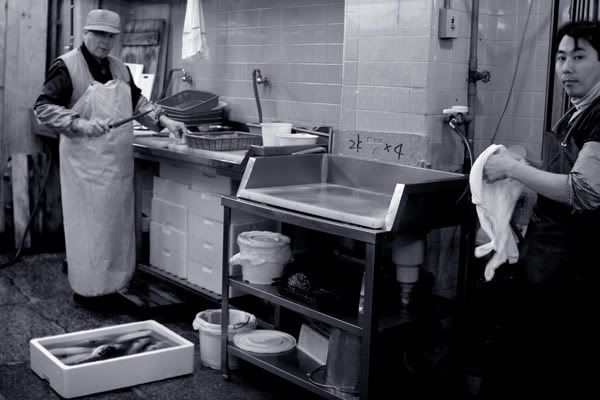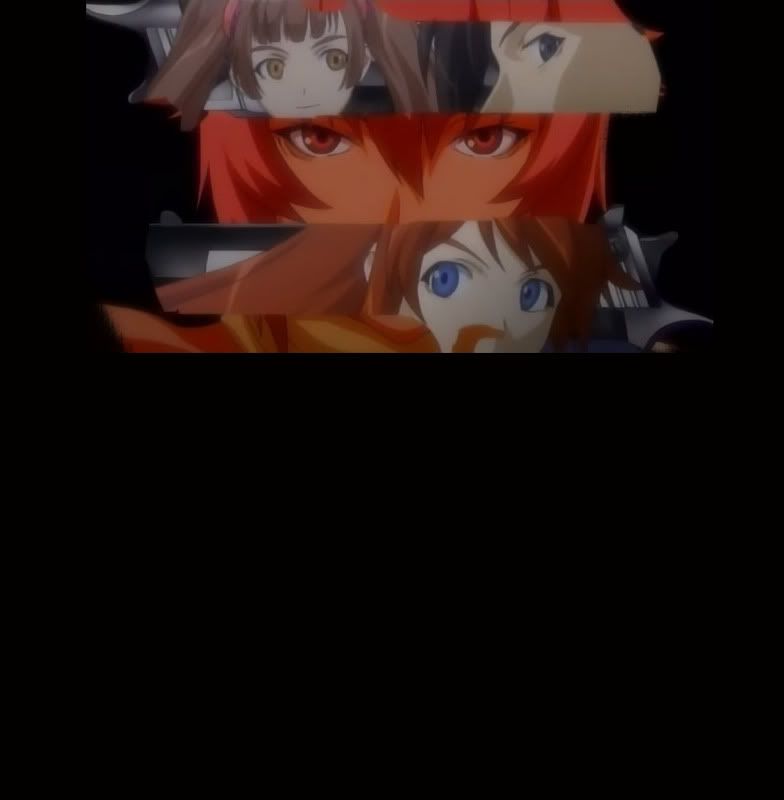I finally had time to put this up due to my 5 day book out. YEA! Hooray hooray, boo yah! Ok anyway, less talk more photos right? Ok here's the Japan journal.
Hello everyone, have just come back from my Japan trip and have just about started processing the shots. Due to the sheer amount of shots from 2 weeks worth and the write-ups I will be doing to accompany the shots, I will only post as I process. I will likely be posting in batches from each city, so do be patient! Thanks!
Fukuoka City
Fukuoka city, like many cities away from the Central Tokyo-Osaka area, has a very laid back atmosphere to it and you hardly see people rushing madly around. Even during rush hour, people remain polite and will always apologise even when they're not in the wrong or if they even get in your way to the slightest degree. The streets, like in many Japanese cities are impeccably clean and you can often find many Japanese commuting by bicycle on the sidewalks.
Commuting by Bicycle
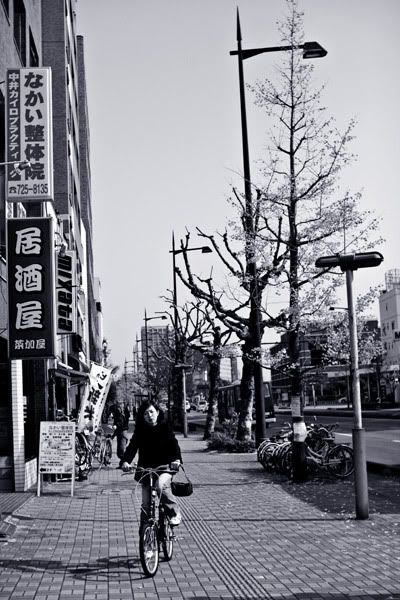
A rather nice place to visit on a sunny day will be the Ohori Park, or Ohori Koen, where there is a peaceful little lake with park benches facing the water front. Locals can often be found here reading, painting, or simply enjoying the fresh air and scenic view. During spring, this park is an ideal place for viewing cherry blossoms.
[U]Ohori Koen[/U]
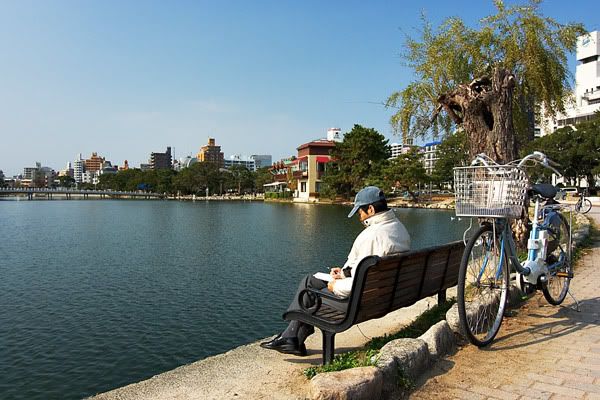
The lake itself is filled with Koi and gulls, adding to the peaceful atmosphere. You can actually cross the lake to get to a little islet via a long bridge that extends over the water.
Ohori Koen
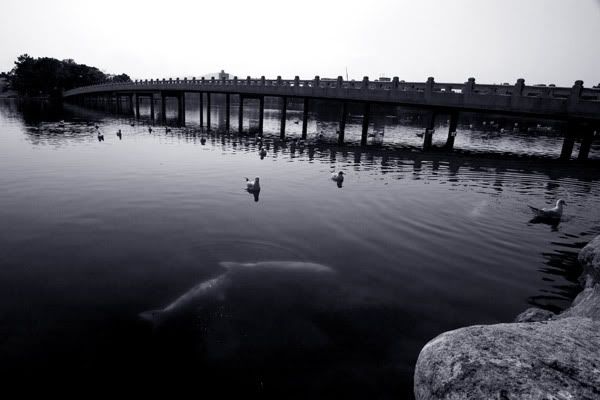
Like many Japanese cities, where Shinto is a popular religion, there are quite a number of temples dotting the city map. If you can get hold of the local festival schedule, do visit a temple that is running a festival. You will see shrine attendants walking freely about and the place will be bustling with visitors. Additional decorations and banners that are not normally present make the place seem more lively. Furthermore, during such a festival, you can talk to the shrine priests, take photos of them and visit places inside the temples or shrines that are not normally open to the public. I managed to come across such a festival during my short stay in Fukuoka and took the opportunity to do a quick tour of the place and to learn more about shinto with my limited Japanese ability.
Festival Lanterns
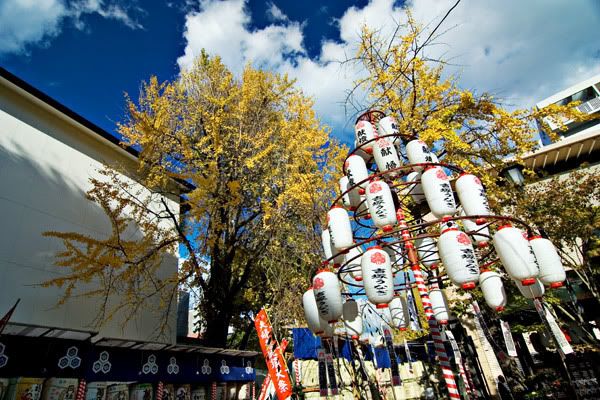
Festival Banners
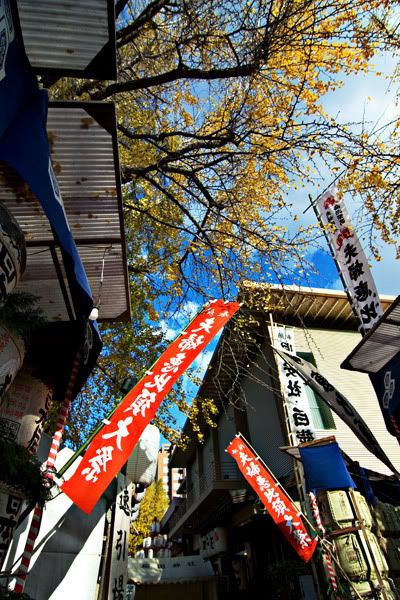
Japanese visitors to the temple purchase little strips of white paper upon which they write their wishes, in the hope that these wishes will be answered.
[U]Prayer Slips[/U]
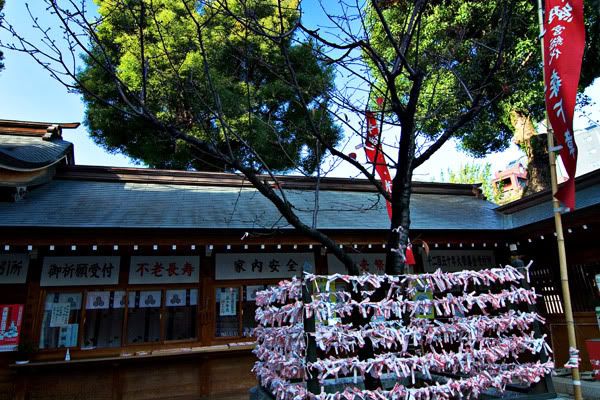
They also ring a large bell by pulling on a rope before praying at the temple.
[U]Prayer Area[/U]
Nearby this particular temple, I also popped by Canal City Hakata, a popular tourist attraction which is in essence a super mall. If you want to do some shopping, this is a great place to do it.

[U]Canal City Hakata[/U]

For more shopping at night, you can proceed down to Marinoa city at the edge of Fukuoka. This extremely large shopping area is situated next to a wharf. Unfortunately, it is a little tough to get there as there is no subway station right next to it. Your best bet would be to get off at the Meinohama Station and take a 100 yen shuttle bus to Marinoa city. From Marinoa city's information counter, you can get a 50 yen discount coupon for the ride back and for subsequent rides to Marinoa city. The sea breeze can get really chilly at night so do bring adequate warm clothing.
[U]Marinoa City[/U]
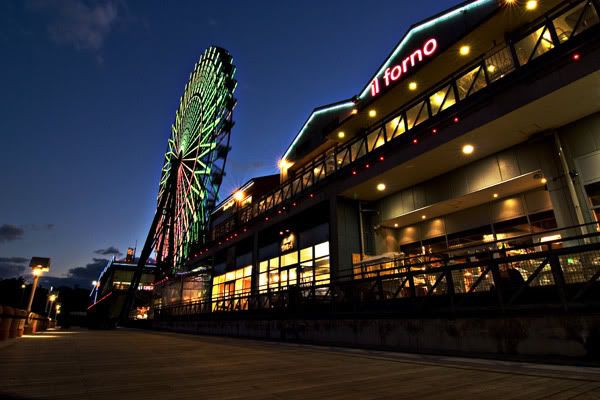
The place is commonly photographed with both of it's giant ferris wheels that allow you to get a panoramic view of Fukuoka city. It seems rather grand the first time you see it, but you will quickly come to realise that other cities also have similar ferris wheels. One interesting thing i noted was that no one seemed to be operating the ferris wheels, even though both were spinning.
[U]Marinoa City[/U]
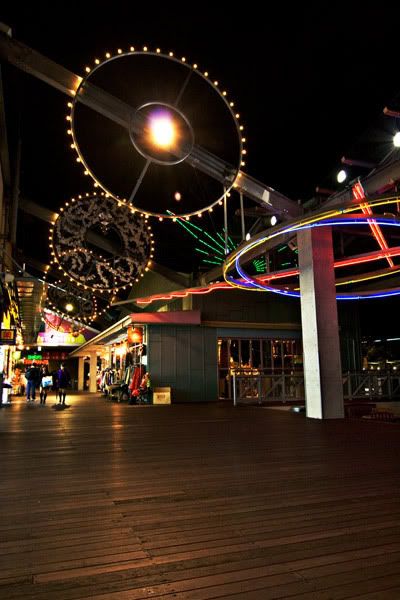
Marinoa city has tons of food joints and has a factory outlet mall for you to do some more shopping. I recommend the Muji outlet for rock bottom prices but high quality clothing. Unfortunately, the food here is nothing much to shout about and you'd be better off seeking a meal elsewhere. Marinoa city seems like a popular place for couples as well, with many strolling along the wharf or within the shopping area. With such a pretty night light up, it's not hard to imagine why.
If you are in search of food at night, do try heading down to the Tenjin(天神) and Nakasu Kawabata (中州川端) area for some street food at the Ya Tai street hawker stalls. There are about 180 Ya Tai stalls located in 4 different groups around the Tenjin and Nakasu Kawabata areas. They serve mostly ramen, but if you look around you will also be able to find other Japanese food such as Oden and Yakitori. They operate in both rain or shine and open at around 5pm. The covers you see on the stall below are removed in dry weather.
[U]Oden Ya Tai stall in wet weather[/U]

[U]A Customer[/U]
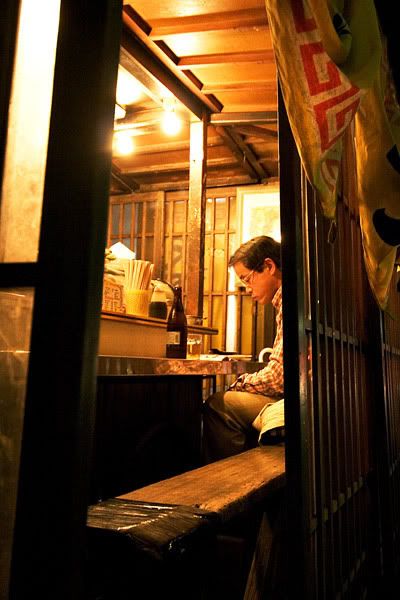
If you look around the city, there will be no shortage of good food for you to eat. Most stalls have plastic food displays that look delicious, and these are also useful for you to point at to order if you don't speak Japanese.
[U]Plastic food displays[/U]

Do drop by the Supermarket in the Tenjin area to try out the bento or box sets in little plastic boxes. These make a cheap meal and if you go in the morning, the food is fresh and highly delicious. Although many supermarkets do sell such bento sets in Japan, the sets from this supermarket were my favourite amongst those from various supermarkets.
[U]Bento Sets[/U]

As you stay in Japan, most hotels and hostels offer either Japanese or Western rooms. A Japanese room typically looks like this and I would recommend staying in them because your house is likely a Western room. I find the mats highly comfortable, but my Dad thought otherwise, so your mileage may differ.
[U]Japanese-style room[/U]

[B]Beppu 別府[/B]
Beppu is a quaint little seaside town that is well known for being a "night-town", according to our host at the Beppu Guest house. A main street runs through the city center and connects all the main malls, or mall, with smaller stalls and shopping arcades. During the day time, there isn't much to do or see in the city center, but you may visit one of the many onsen, or hot springs, for a traditional Japanese bath. As there wasn't much to do or see, I opted instead to check out the view at the beach, which really wasn't all that great because of the horrendous barricade at the sea front, which kinda spoils the whole thing IMO.
[U]Beppu Seaside[/U]
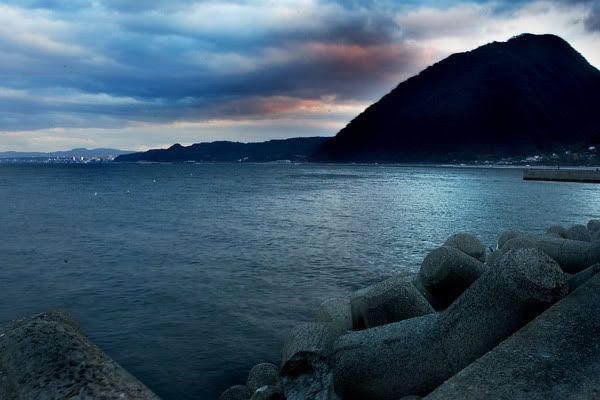
At night, this is when the city comes alive. Lights suddenly pop up everywhere and activity starts to bustle in the back lanes. As a photographer, you will want to make ample use of your blue hour so you might want to spend the day scouting around for compositions to use later.
[U]Lanterns[/U]

Exploring the back lanes of Beppu will bring you to the Beppu Red Light district, which is primarily why it is called a night town. Most of the good food and activity centers around this location. There are "pimps" of sorts outside each establishment, but they do not forcefully solicit business from passers-by and hence the area is safe to travel at night. As I moved through the area making images, I was approached several times by the "pimps", but they were always polite, even when their offers were declined. If you explain to them that you are a tourist, they will not object to you taking photos of them or the establishments. All the establishments open till about 2-3am should you be interested.
[U]Beppu Red Light Area[/U]
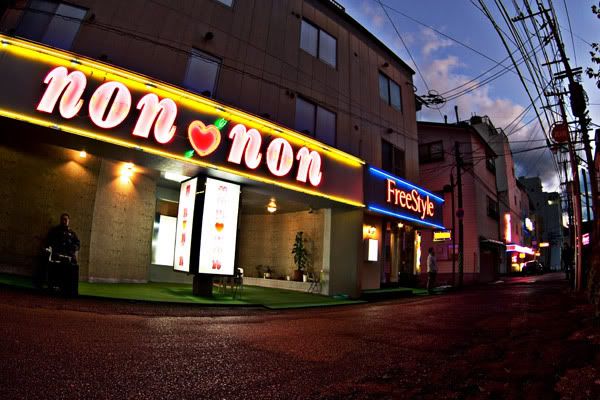
Deep in the heart of the red light area lies the famous Tasegawa Onsen, where a bath will only cost you a mere 100 yen. As with all public baths, be mindful not to step on their tatami mats with your shoes. Change to the slippers provided. Lockers are also available for you to store your belongings. If it is not common sense to you, photography is not allowed inside the baths as clothing is not optional.
[U]Tasegawa Hot Springs[/U]
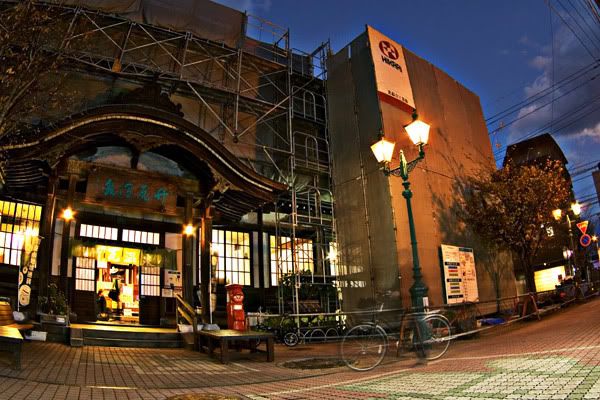
A fantastic place with reasonable pricing to eat in Beppu is a restaurant on the main road called Bilikan. It has an odd looking statue of bald Bilikan in the front and doesn't look very impressive, but once you go inside, lighting is warm and the food is great. I'm horrible at food photography, but I tried to shoot some pictures of the food here and there to show you guys.
[U]Interior of Bilikan[/U]
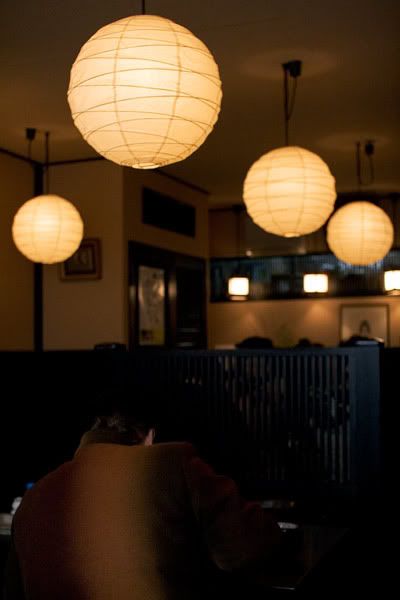
[U]Fresh zushi, at only 600 yen.[/U]
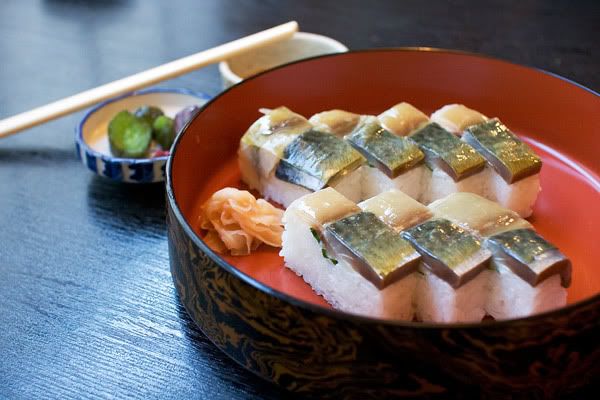
Another great place to eat in Beppu itself is a Yakitori shop just off the main street. It is next to a sushi shop called Shin Zushi that is also recommended. The shop looks something like this.
[U]Yakitori Shop[/U]
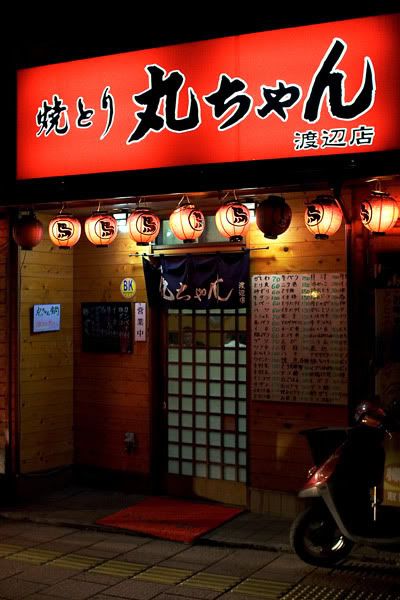
The waitresses speak Chinese, English and Japanese, so I doubt you'd have a problem ordering. The boss doesn't really like photography so I couldn't make any images of the food, but I highly recommend the pig intestine soup and the scallop and eel yakitori. If you do not know what to order, you can ask the boss to come up with a set for you, which includes staples like pork belly and chicken. It is all delicious so don't be afraid of ordering anything. I have literally tried everything on the menu, at the cost of about 5400 yen. I'm usually not greedy but it was just too good.
[B]Oita 大分[/B]
This is an industrialised rural city of sorts where you would be more likely to be working in rather than touring. Stuff to see in the city isn't all that exciting, with tourist attractions being mostly shrines and temples. I'd recommend not more than a day here.
[U]Kosaiji Temple[/U]
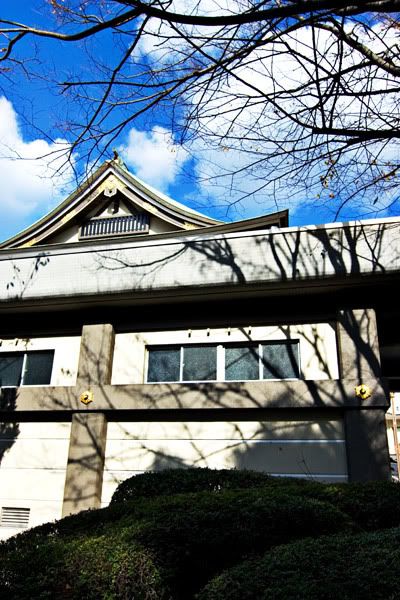
The Kosaiji Temple is near the train station and is a modern Shinto temple, as opposed to the traditional Shinto temple I presented earlier. The buildings look modern, but it is clearly a temple. Most of the grounds is occupied by a car park. As I was there in winter, the sakura trees were all not in bloom. In spring, this would probably be a nice place to view cherry blossoms as many sakura trees dot the grounds.
[U]Hofu Inari Shrine[/U]
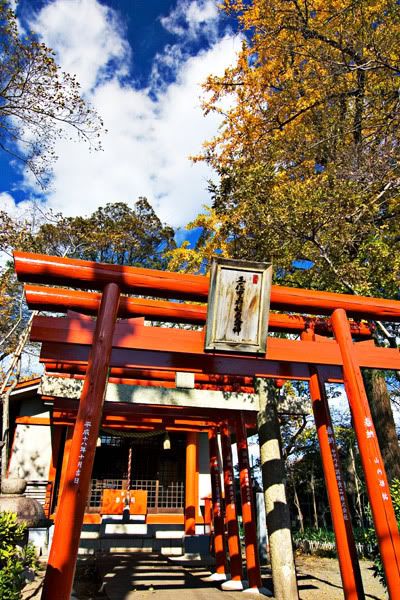
This is probably the most pretty shrine in the area, even if it is a little small. In autumn, the place would probably be spectacular due to the kind of trees planted at the shrine. The shrine is off the main road, like many of the shrines and temples in Oita and can be a little difficult to find. It is just off Nishiki-Machi, should you wish to take a look.
[U]Inari Shrine Treescape[/U]
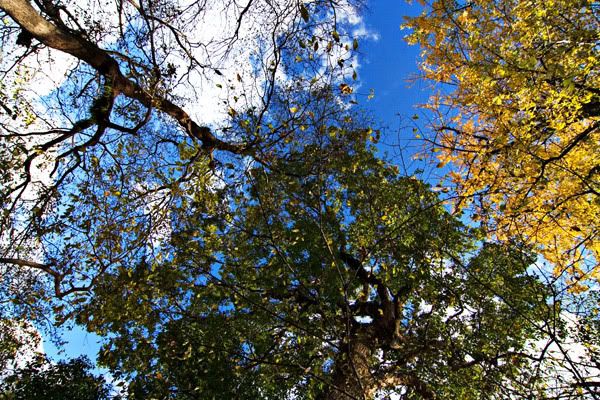
If you wish to do some landscapes, the best place to get this done would be the Oita riverside, where there are vast expanses of long grass and bridges at various points. I didn't find it very inspiring, so I didn't bother to stay till sunset. Here's roughly what the place looks like in the day.
[U]Stormclouds over Oita riverside [/U]
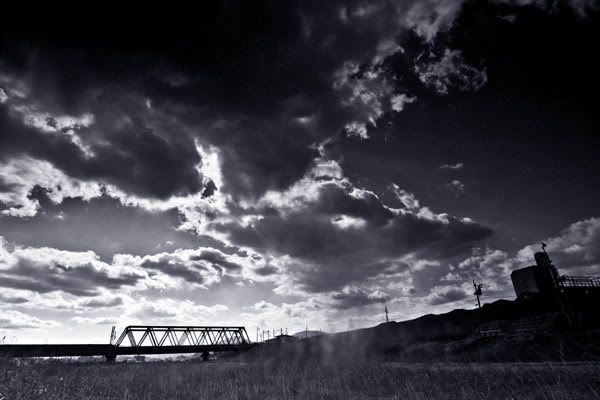
[B]Yufuin湯布院[/B]
[U]Yufuin Station[/U]
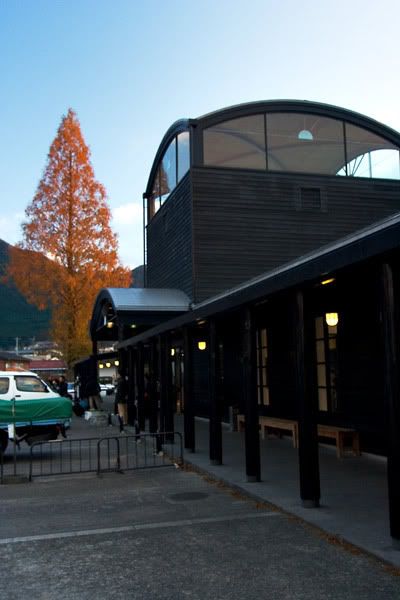
This was one of my favourite stops on the entire journey, where there was an abundance of colour and great scenery. I only had time to spend about half a day there, but I enjoyed it thoroughly. Yufuin is best known for its hot springs and many of these hot springs dot the mountain side. They have the regular bathing variety and they also have another variety where you can play in the water and is great for kids. They rent out swim suits at 200 yen should you need one. Swim suits are required for the other variety and are not allowed for the traditional variety.
[U]Green House[/U]
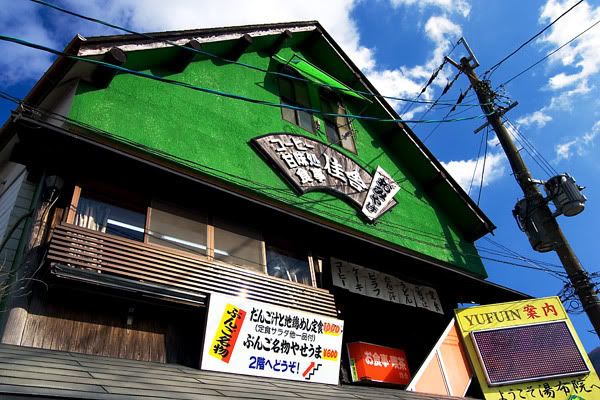
You can choose to either grab a taxi to tour the city or rent a bike at 200 yen an hour to cycle around the country side. For photographers, I'd highly recommend the bike option because it's cheaper and it allows you to stop whenever you want to make images.
[U]Taxi Stand[/U]
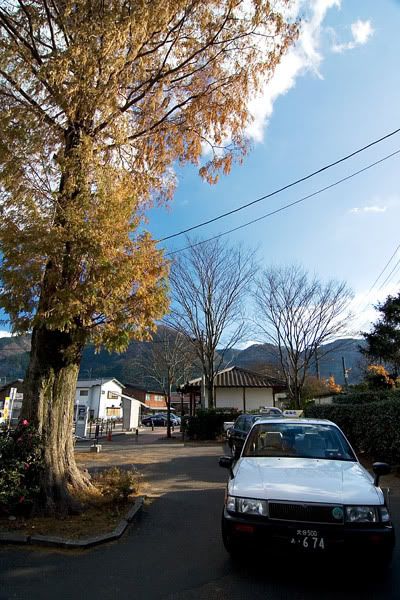
[U]Bike[/U]
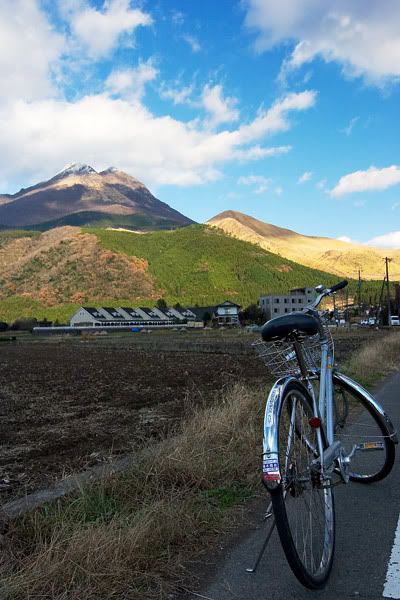
After you leave the city centre, you can get unobstructed views of the main mountain in the area. Undoubtedly, the mountain will feature in many of your images. To my knowledge, there is no tourist path up the mountain.
[U]Two Rivers[/U]
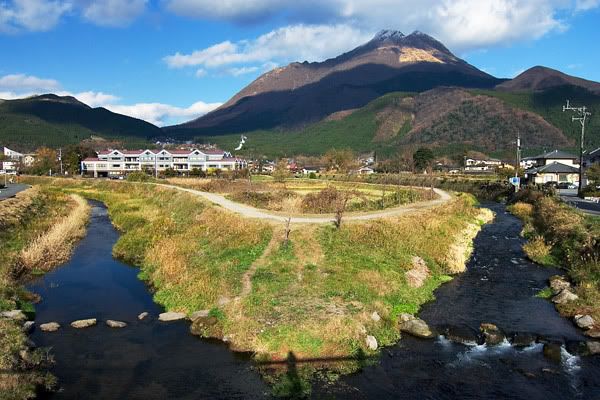
Given the great light I had when I visited Yufuin, I roamed around the countryside on my bike searching for a great subject to make use of the light. I was inspired by a bunch of persimmon trees that had shed their leaves but had not been harvested.
Persimmon Trees
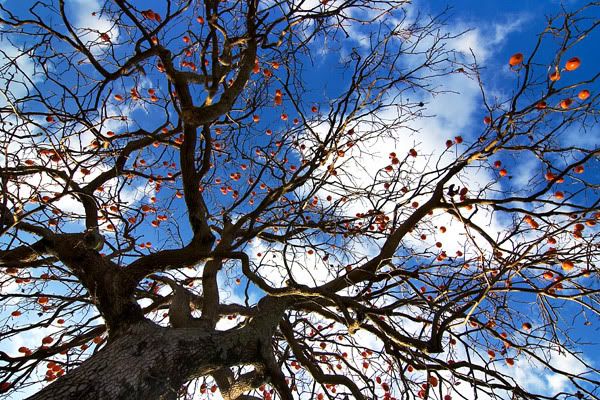


After I came back from the countryside, I realised that like Ayers Rock, the mountain also seems to turn red at sunset. I immediately regretted returning the bike but as I considered renting it again, I realised that I wouldn't be able to make it to a nice place in time to make use of the light. Learn from my mistake if you're going there!
[U]Yufuin evening[/U]
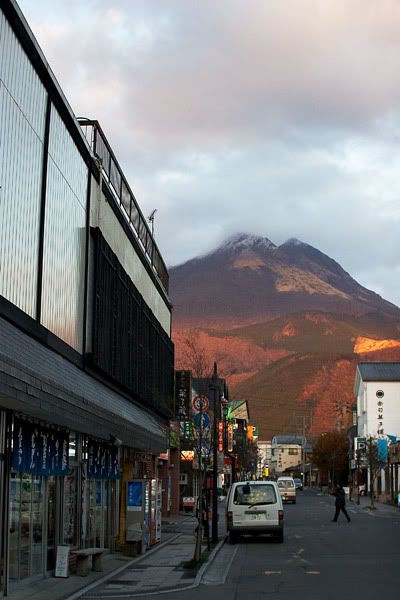
There are 3 types of trains in Japan, the Local trains, Limited express trains and the Shinkansen super express trains(Nozomi, Hikari and Kawada). The Local trains are the cheapest and slowest. If you have a JR pass, do make use of the limited express trains whenever possible because they save time. In Kyushu, the Shinkansen routes are limited and you will be using local and limited express trains most of the time.
[U]Local train at Yufuin station[/U]
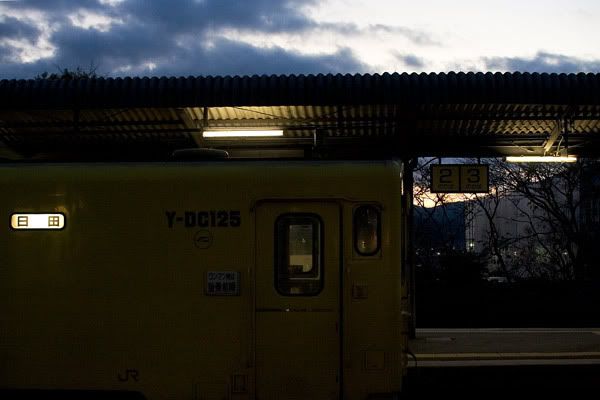
[B]Kagoshima-Chuo, or Kagoshima Central[/B]
After a rough day of travelling, I arrived in Kagoshima just before dark. By the time I got out of my hotel, I had totally missed any light. As I had my camera with me, I decided to do a street series after dinner.
A street series I shot in Kagoshima-Chuo. Mostly F1.4, shot from the hip.
#1
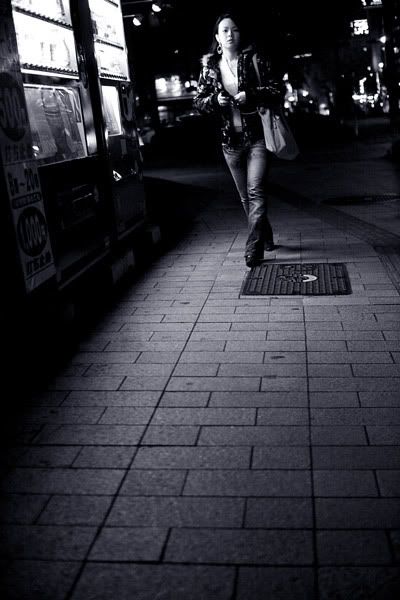
#3
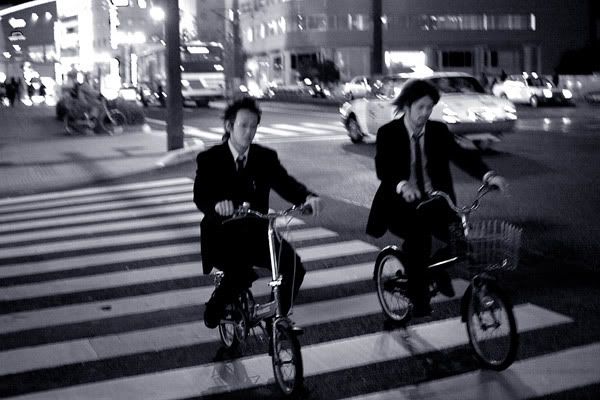
#4
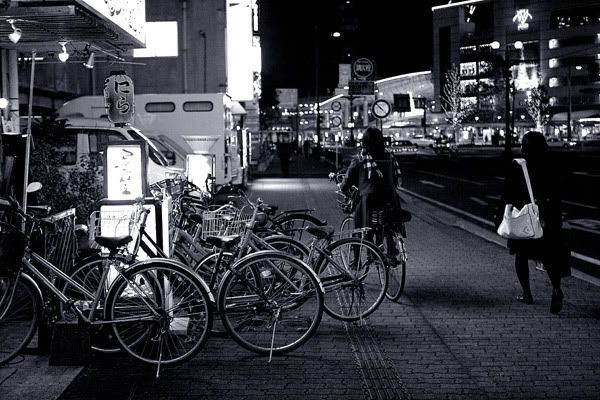
#5

#7

Along Bell St, near the station, you will find lots of yummy food. I recommend the restaurant closest to the station. Somehow, I neglected to take a picture of the frontage of the restaurant, but the interior looks like this.
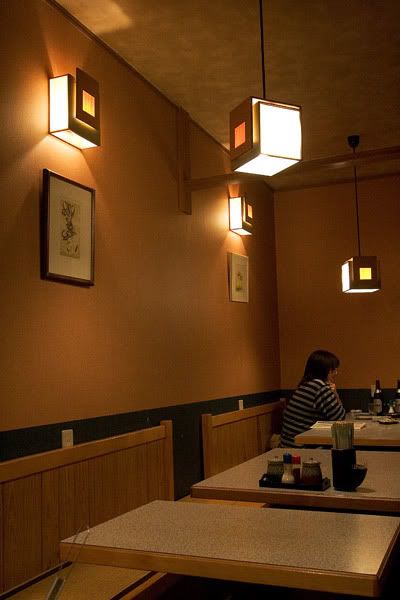
The restaurant is very popular with locals and is packed around 6-7pm. They do not allow waiting and will politely refuse you entry if the restaurant is full. Come back later, it's worth it. Their speciality is Higashi beef Shabu Shabu, or Japanese hot pot. This tastes great, but you should also try their raw Higashi beef marinated in ginger and black vinegar, which tastes even better.
[U]Higashi Beef[/U]

During the day, you can catch the Sakurajima?? ferry from the SakuraJima port, which will bring you to Sakurajima island, home of the active volcano (surprise!) Sakurajima.
[U]Sakurajima ferry[/U]

The island is pretty scenic, but as it is around 2/3 the size of Singapore,do be prepared to spend a substantial amount of time here. I only set aside 2 hours, about enough time to get to the visitor's centre(substantially far away from the ferry terminal) and back. I was able to squeeze in a quick walk of the blue lava trail to bring back some photos. The main item of interest here is of course the volcanic rock from past eruptions, but if you're a bird shooter, you may want to bring a lens to shoot the raptors here, which fly extremely low. I estimate that you will be able to get a full body shot of a bird in flight with a 200mm lens. There are many here so I doubt you'd be wasting your time.
[U]Sakurajima Volcano(in the background)[/U]

[U]Visitor's centre[/U]
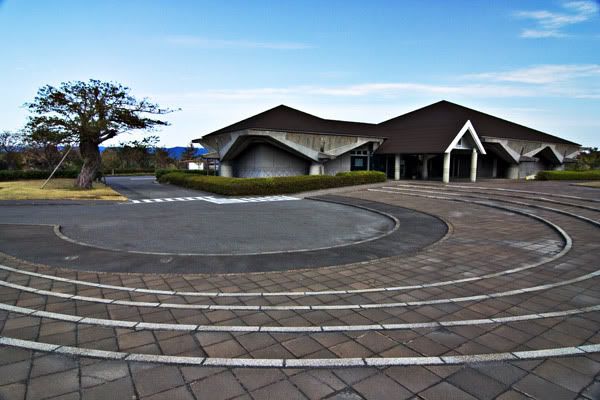
[U]Shrine on a hill[/U]

As the volcano is active, lava rocks from past eruptions dot the landscape and make great subjects. At the visitor's centre, you will also see live CCTV images of the volcano, as part of Sakurajima's early warning system.
[U]Lava Rock[/U]
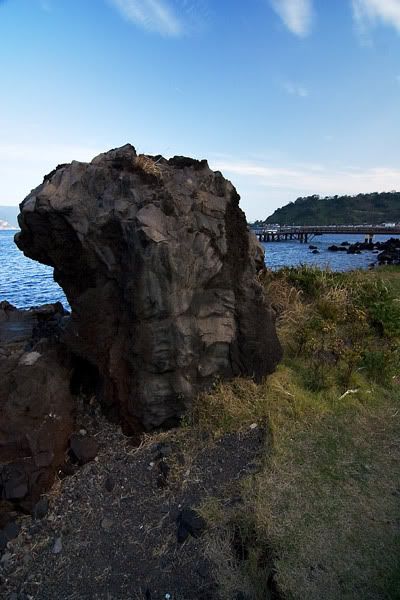
[B]Ibusuki[/B]
Ibusuki is a town primarily famous for its onsen and Sanamushi, or sand baths. Booking a seaside hotel will allow you to soak in the onsen while watching the sunset as they typically have onsen with glass windows that face the sea. Sanamushi requires you to go down to the beach where you have to pay 1000 yen to get buried in the volcanic sand, which supposedly has health benefits. At 1000 yen, I didn't try it, so I wouldn't know if that's true. For landscape shooters, Ibusuki has really quite a number of unique imaging opportunities due to the interesting nature of the black volcanic sand(hey how often do you see a black beach?). I had quite a ball shooting pictures of the area, so much so that I completely missed out on the Onsen baths. I'd was wary of the cold, having made some images at Beppu's seaside and suffered frostbite, but Ibusuki, apparently the 2nd warmest Japanese city after Okinawa, caused me no such problems, even though I was only in a simple pullover. Due to the weather, people normally walk around in their Yukatas, which the hotel provides. These are comfy, but I thought it would be a bit odd to lug around my tripod and gear while wearing it, so I only used it for sleeping. Their primary use is for onsen bathing though.
[U]Before Sunset[/U]
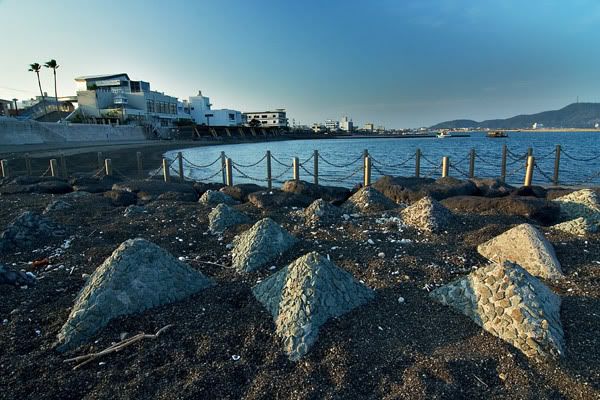
[U]Sunset[/U]
Tian Ya filters flare like crazy :(
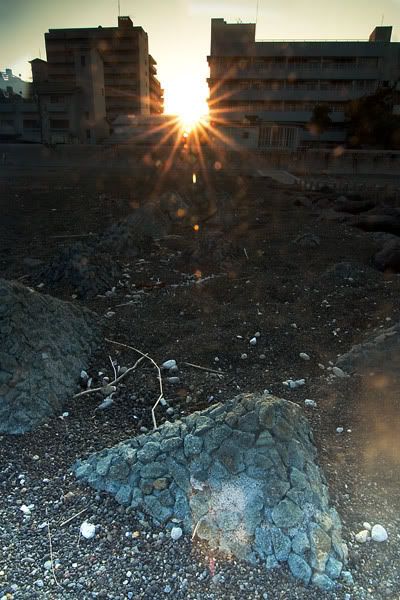
[U]After Sunset[/U]
This is also my hotel
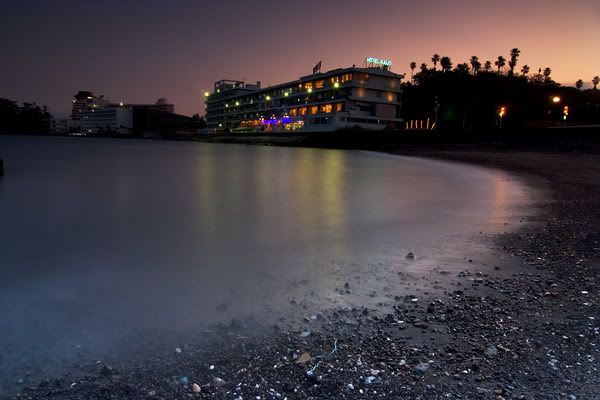
[U]Blue Hour[/U]

[B]Kumamoto熊本[/B]
I arrived in Kumamoto to face the first of 3 sodden days of bad weather. The rain was extremely heavy, so I didn't do much shooting and took cover in the Kumamoto Museum of Crafts.
[U]Kumamoto Museum of Crafts[/U]
There's a wide range of hand-made crafts here that you can actually purchase, unfortunately the prices are horrendously high.
After some time, I decided to make photos despite the weather. I started out shooting with an umbrella, but I wound up fumbling with the equipment too much and not making any images, so I happily discarded the umbrella the moment the rain got slightly lighter. Nevertheless, I had to wipe down the equipment continually to keep it relatively dry. I also got some "special" effects from the wet weather.
[U]Kumamoto Castle exterior from under an umbrella[/U]

[U]Condensation on the tram[/U]
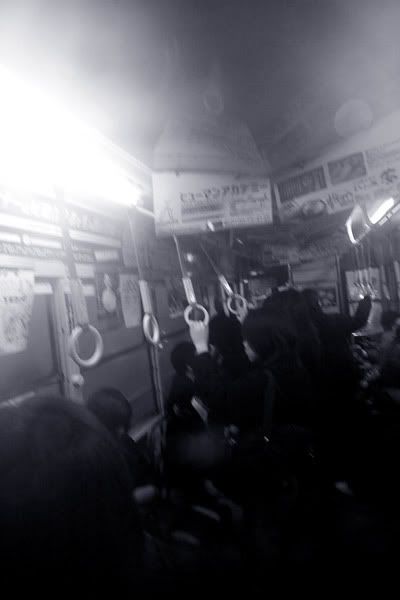
[U]Shimotori Arcade, with Raindrops[/U]
ShimotoriShoppingArcade.jpg">
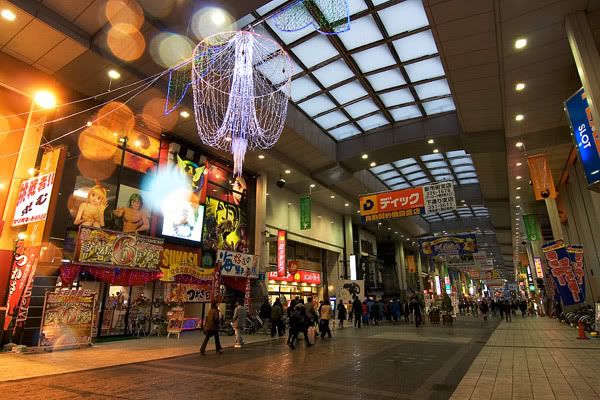
[U]Night light up outside Shimotori Arcade[/U]

In search of food, I located this popular restaurant called Za Watami in Kumamoto. It was packed with locals as the food was good and prices were low by Japanese standards. Sides start from 210 yen. I later discovered that Za Watami is a chain that has branches in almost every city, unfortunately the quality doesn't remain constant between cities. The one in Kumamoto is a definite must-try.
[U]Za Watami Frontage[/U]

[U]Za Watami Interior[/U]

Interesting items on the menu are horse meat sashimi, which tastes really good IMO, and oyster shabu shabu, which also tastes really good. They have almost every type of Japanese food you can imagine, so if you want to try a wide range of Japanese food, this is the place to go.
[U]Oyster Shabu Shabu[/U]

[U]Horse Meat Sashimi[/U]
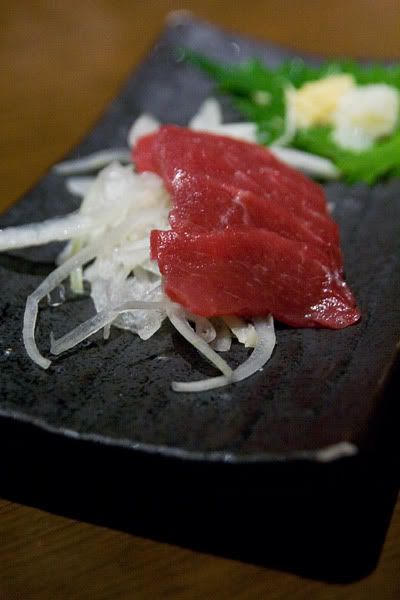
Do also drop by the Ramen shop at the Kumamoto train station. Their Ramen is really really delicious, with nice springy noodles and delicious broth.
[U]Tonkatsu Ramen[/U]
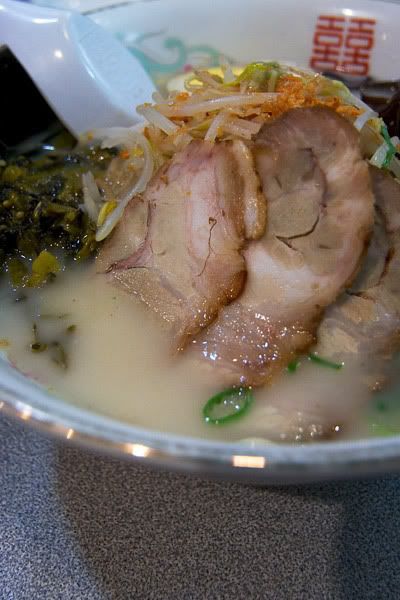
[B]Nagasaki[/B]
As I think most of you would know, Nagasaki was hit with an atomic bomb in the year 1945, where there was a massive casualty rate of about 200,000 on impact and about a million people suffered the aftereffects of radiation mutation years later. Today the city is safe and you will not grow any additional limbs if you visit the area. The vegetation surrounding the the point of impact, or the Hypocenter, since the bomb did not actually hit the ground but exploded 500m above the ground, is now growing but you will observe that it doesn't seem as healthy as you would expect. Scientists have not completely found a way to eradicate all of the effects of the raditiation even after 60 years, and hence Nagasaki is a continuing reminder for the need for peace and the destructive capability of nuclear weapons.
The hypocenter is the theoretical point directly below where the bomb exploded, calculated by scientists, since everyone within a 3 kilometre radius was instantly killed and the ground was levelled within a 1 km radius. Today, people place colourful ribbons at the hypocenter and various memorial shrines around the hypocenter to remember those killed.
Atomic Bomb Hypocenter
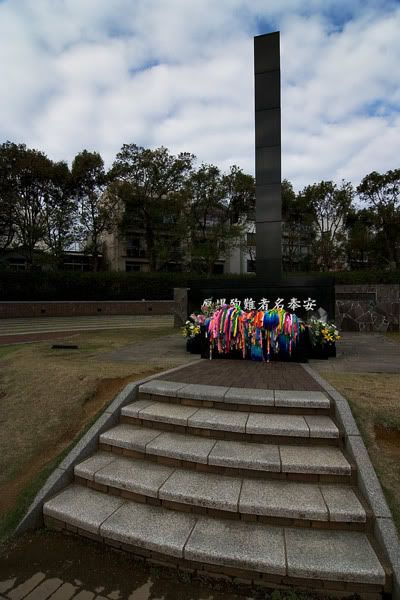
Many artists, inspired by the sheer grief of the tragedy, have also come together to produce various sculptures that lie scattered around the Peace Park. These serve to constantly remind us about the beauty of peace, and also the horror of the tragedy, as some sculptures depicted.
Peace Sculpture
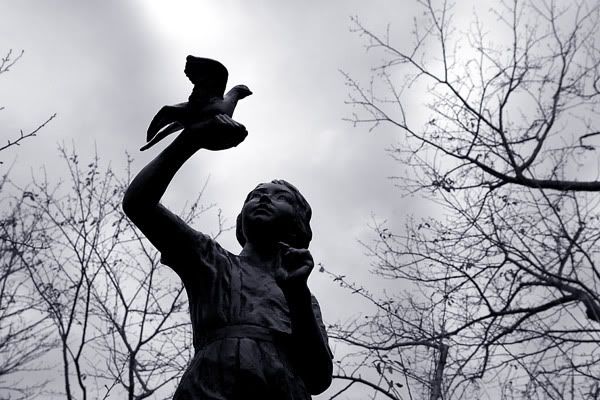
The Nagasaki Harbour is located next to the Seaside park, where you can take a evening stroll amidst the beautiful setting. Unfortunately, you cannot photograph the sunset at the Seaside park because it is surrounded by trees, which will block your sunset. I do recommend heading down to Nagasaki harbour because it is also very beautiful at sunset, although the photo probably doesn't do it much justice, but I was rushing to catch the light at this point, so well, it's a record at least.
Nagasaki Harbour
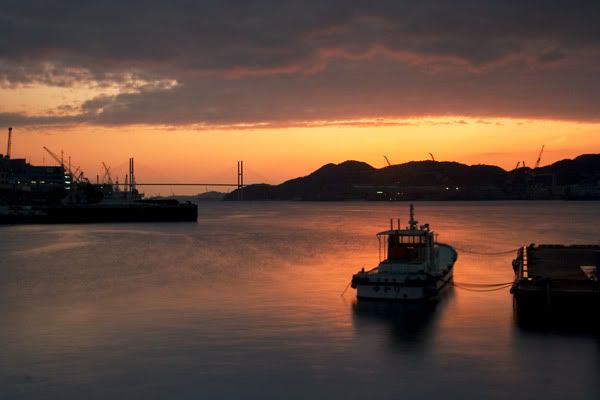
From there, you can walk to Shinchi Chinatown, which isn't really all that great, because IMO, nothing about it is distinctively Chinese. The people there are polite and the streets are clean and it seems too Japanese to be authentically Chinese. Nevertheless, it is a tourist attraction, popular with the locals, who probably get a very wrong idea of the actual China from there. The place looks something like this:
Shinchi Chinatown
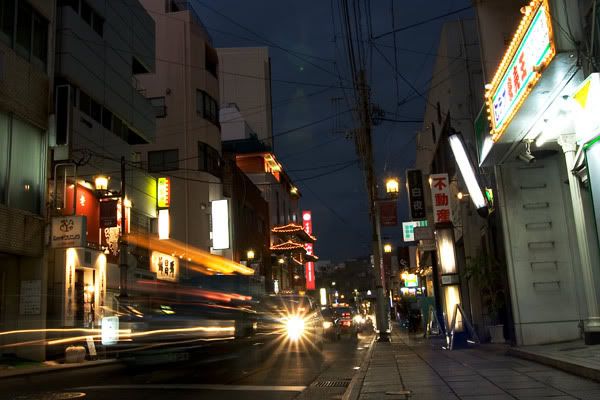
Shinchi Chinatown Gate
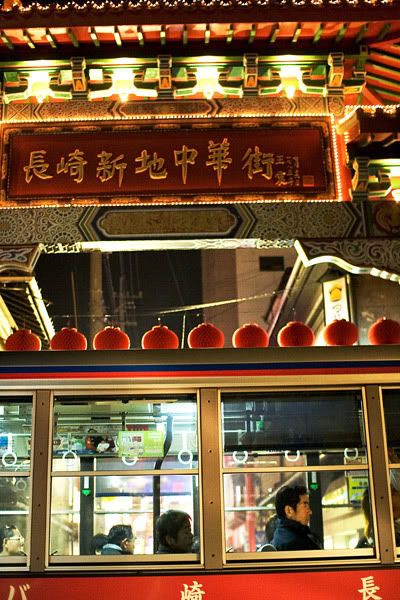
I had actually intended to shoot this image at blue hour, but I couldn't make it in time. I was intrigued by the crossing of the railway tracks in the afternoon, so I decided to come back and shoot it at night.
Nagasaki Eki Mae
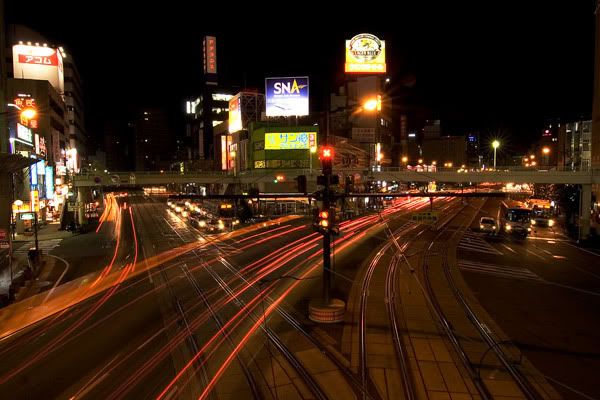
The Dutch slope is so named because Nagasaki was once a Dutch colony and this is where most of the Dutch architecture still remains. There's nothing much really to see at this area so you can give it a miss if you wish.
Dutch Slope
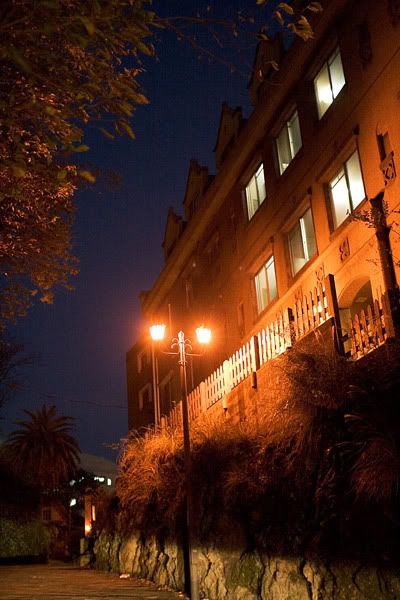
[B]Hiroshima[/B]
I stopped at Hiroshima on transit, so I was there for a total of about half a day. Having heard about Miyajima Island, where the Torii gate, the No. 3 most photo-graphed attraction in Japan, is located, my family decided to visit Miyajima. Unfortunately, with the sodden weather, making a good picture of the Torii gate proved elusive. I also tried not to repeat the compositions I had seen earlier, but a good picture did not result. Oh well. Tips to shoot the Torii gate include going at a good time, not the afternoon as I did, and also waiting for low tide for interesting foreground.
[U]Rainy Weather at Miyajima [/U]
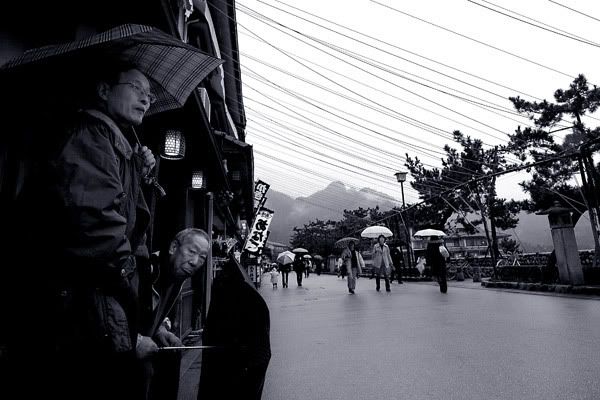
The place has quite a number of deer hanging around the premises. The deer are not aggressive but are by no means harmless. If you have food hanging around, stay away from the deer. They will jump to pluck food right out of your hand if you're not careful. They are quite curious and with a little luck you may be able to produce some interesting photographs. This deer was about 4cm from my Zenitar FE.
[U]Curious Deer[/U]
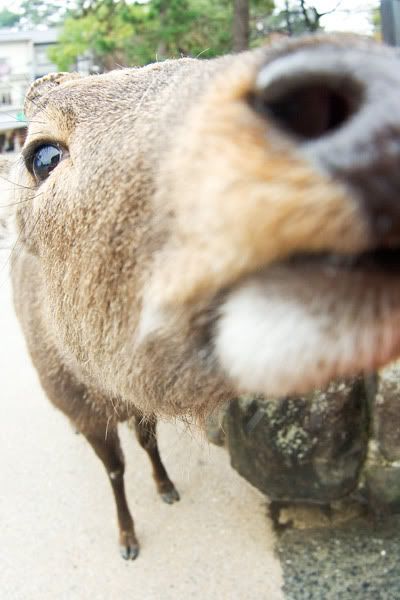
There's also a pretty large temple here at Miyajima, if you're sick of seeing temples by now, you should at least photograph the outside. Frankly speaking, I think the temple is more cool than the Torii gate, but that's just my personal view.
[U]Temple on Water, Miyajima[/U]
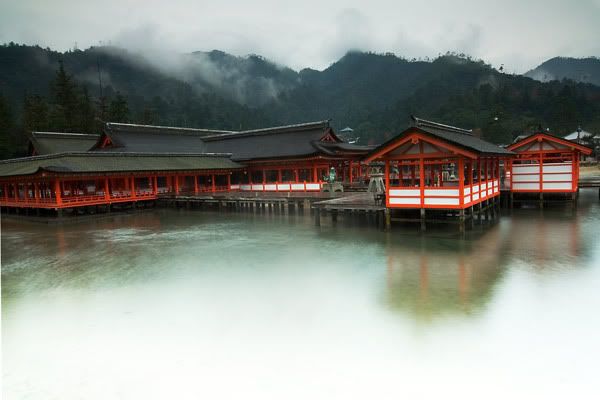
Here's the famous Torii gate in the background. By my Mum's request, I also shot the standard travel brochure composition, but I hate it, so it's just vegetating on my HD.
[U]Torii Gate[/U]
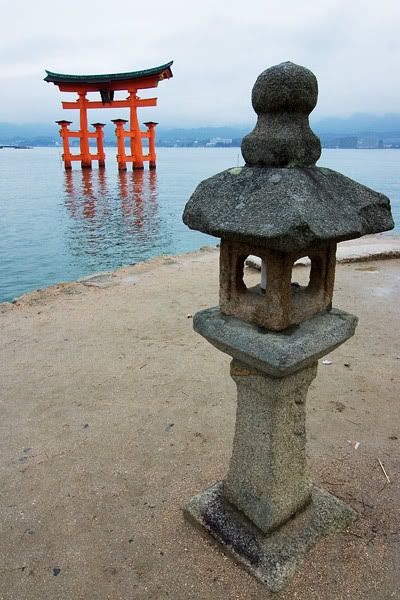
The greatest thing about Miyajima though is the food street, where you can find various delicious items for sale. Must trys include the fish cake, which comes with various items mixed in the paste, such as Tako(Octopus) or Ebi(Prawn), Grilled Oysters with beer sauce, and the cream puffs, which are to die for.
[U]Miyajima Food Street[/U]
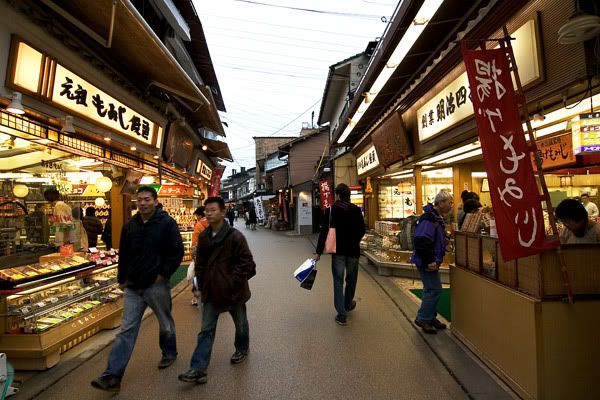
[U]CreamPuffs[/U]
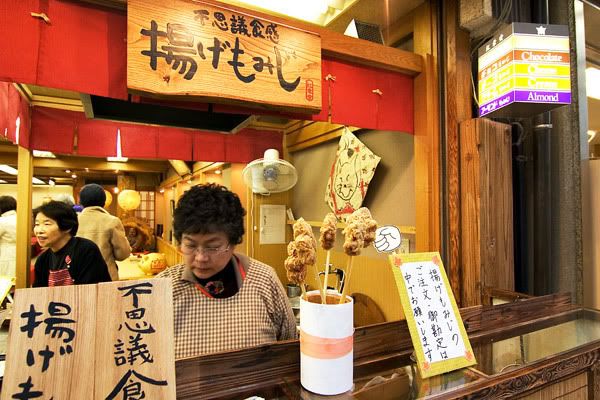
[U]Grilled Oysters[/U]

I arrived in Hiroshima city rather late as I only returned there to catch my train, but a visit to Hiroshima wouldn't be complete without at least checking out the A Bomb Dome, so here it is, although I didn't quite make it at blue hour.
[U]A-Bomb dome[/U]
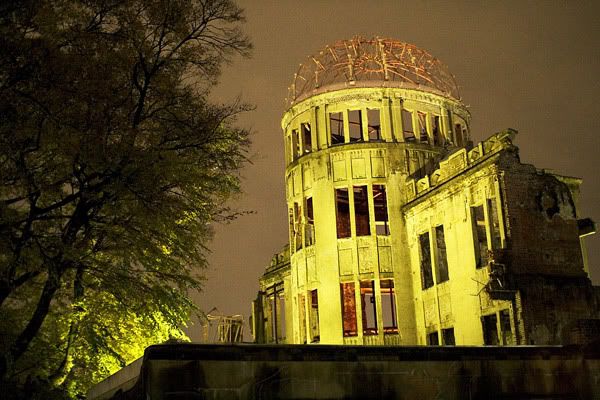
[B]Kobe[/B]
[U]Mt. Maya[/U]
You can grab a cable car ride up Mt. Maya at Shin-kobe instead of walking for about 800 yen per head. For 1000 yen you also gain access to the Nundaki Herb Garden, which is highly recommended if you intend to walk down. The pass allows you access to the Glass house, which is a pretty piece of architecture and also a green house. The cable car ride is really scenic, allowing you to check out the city at the same time from an aerial perspective.
View from the Cable Car

Nundaki Herb Garden

The Glass House
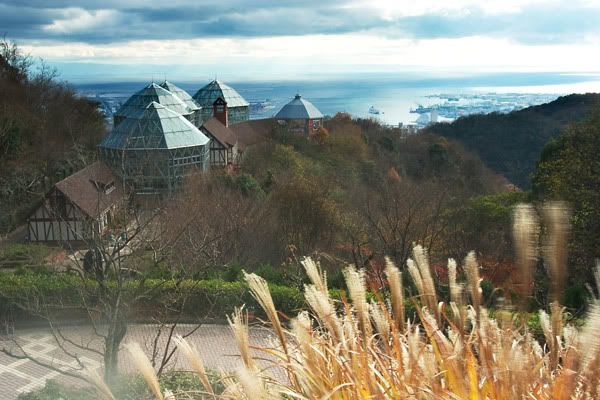
Cable Car Station
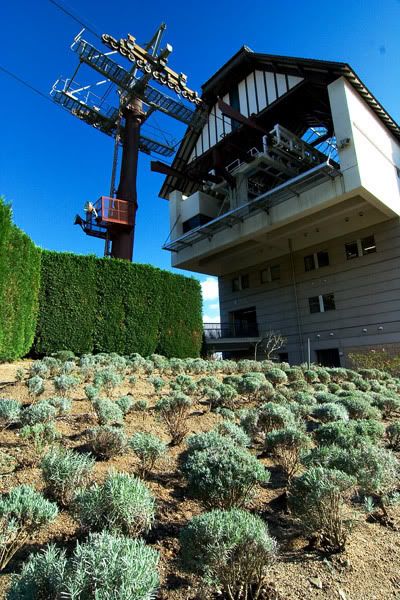
Kobe city itself is massively crowded on weekends. This scene was photographed at the Motomachi shopping district, where police were forced to close roads and form human barriers in order to regulate the massive crowd, which numbered tens of thousands. This crowd was going to Harbour land by the way, which is supposed to be really pretty, but I didn't think it warranted a 4 hour queue, so don't ask me how it's like.
Kobe Crowd Control
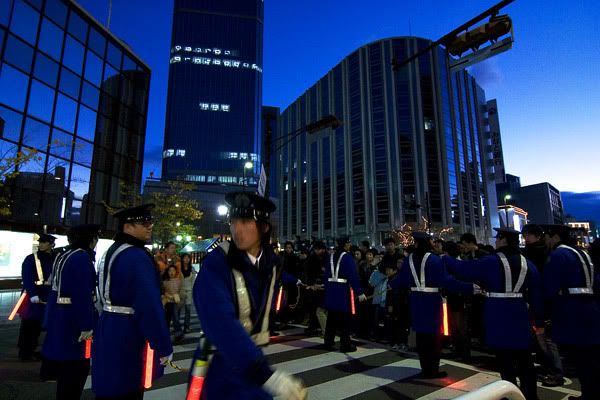
Police use loudhailers to direct the traffic, it's really quite a sight and shouldn't be missed.
Throughfare
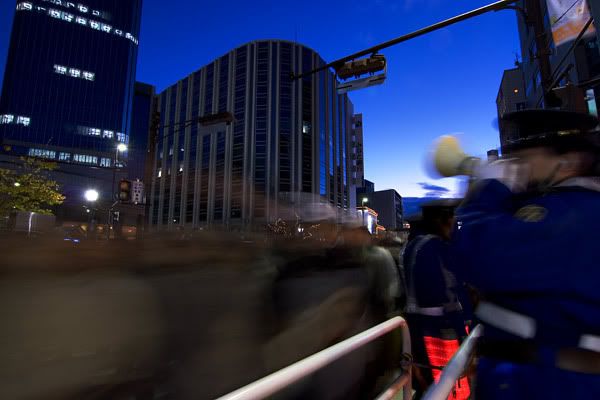
[B]Kyoto[/B]
[U]Kyoto Imperial Palace[/U]
The Kyoto Imperial palace was the former residence of the Japanese emperor, but the royal family has since moved to the current palace since the 1800s, the site has nevertheless been marked off as a cultural relic and tours are conducted hourly. The grounds were very pretty due to the Autumn colours, but I wasn't inspired to shoot many photos of the actual palace itself, because of the sodden weather. Gray skies are just, flat.
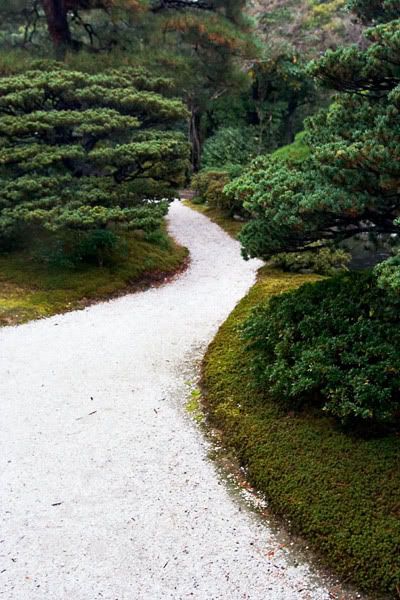
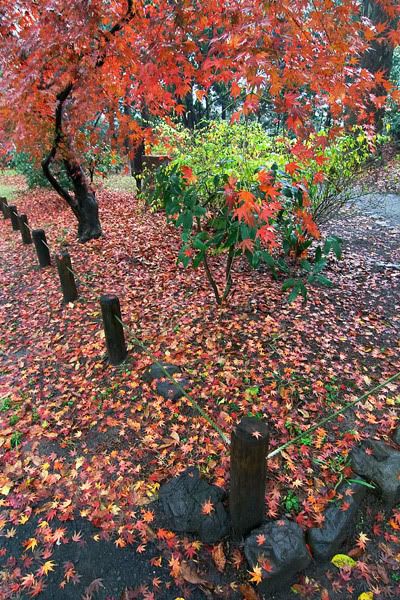
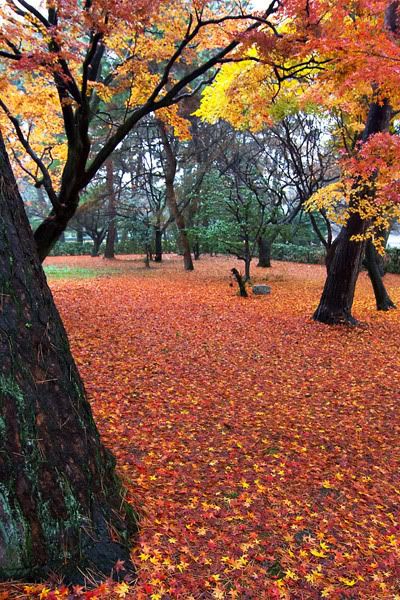
[B]Osaka[/B]
You can visit America-Mura in Osaka if you wish to do some shopping. There's a lot of trendy clothing here at really affordable prices. If you want to do some street shooting at night, this is a wonderful place to do so as well, with colourful light ups and funky music. The place smells of teen spirit and is worth checking out. It looks quite boring in the day, so do go at night.
[U]America-Mura[/U]
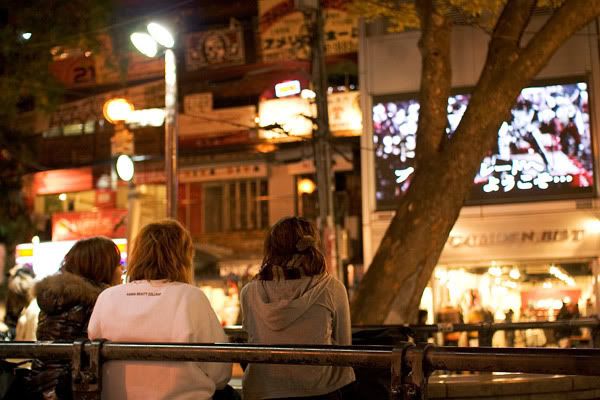
Another Big attraction in Osaka is the Kuromon Ichiba market, where Fugu, or pufferfish, seems to be sold everywhere here. There's also a massive range of very alive seafood, from crabs to massive cockles, as well as a large range of cooked food that stretches from Tempura to Oden. I shot a street series from two markets, the other being Kyoto's Nishiki market, which is equally impressive but focuses more on cooked food, and collated them below.
A Fish Monger's Portrait
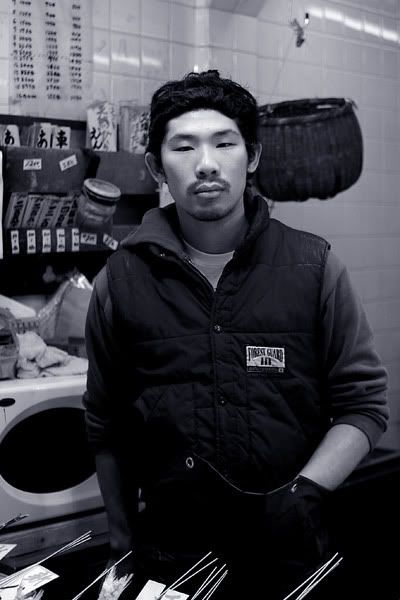
A Customer
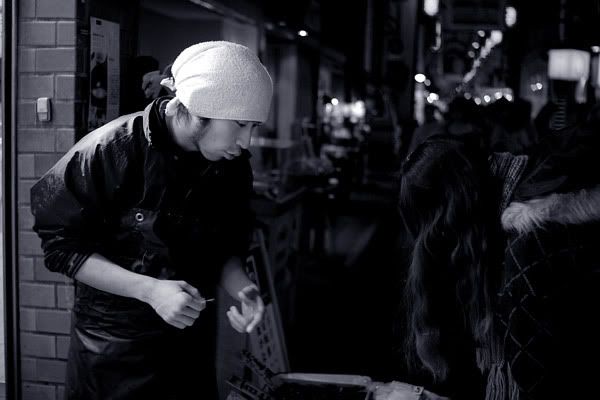
Quick Calculations
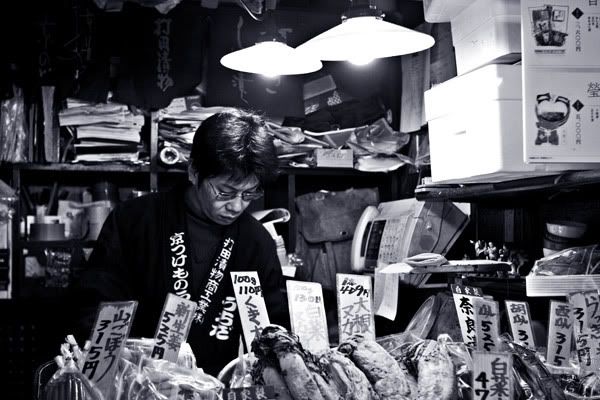
Stock Taking
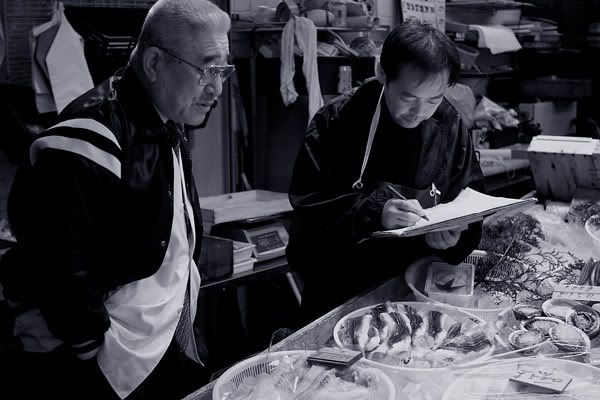
Price Check

Cleaning Fish
